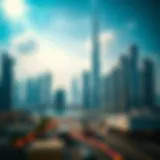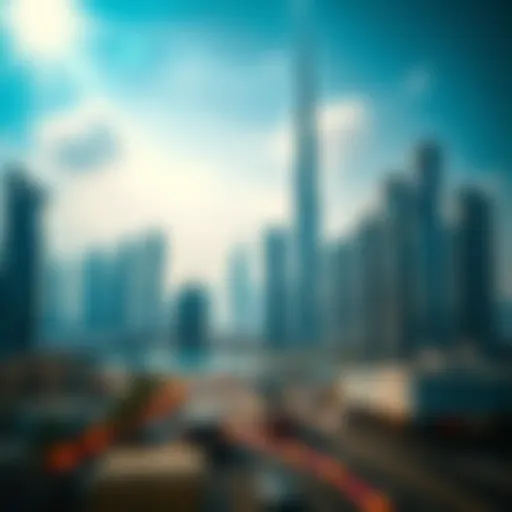Understanding Room Dynamics in Dubai's International City
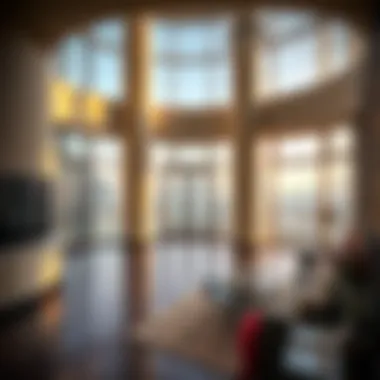
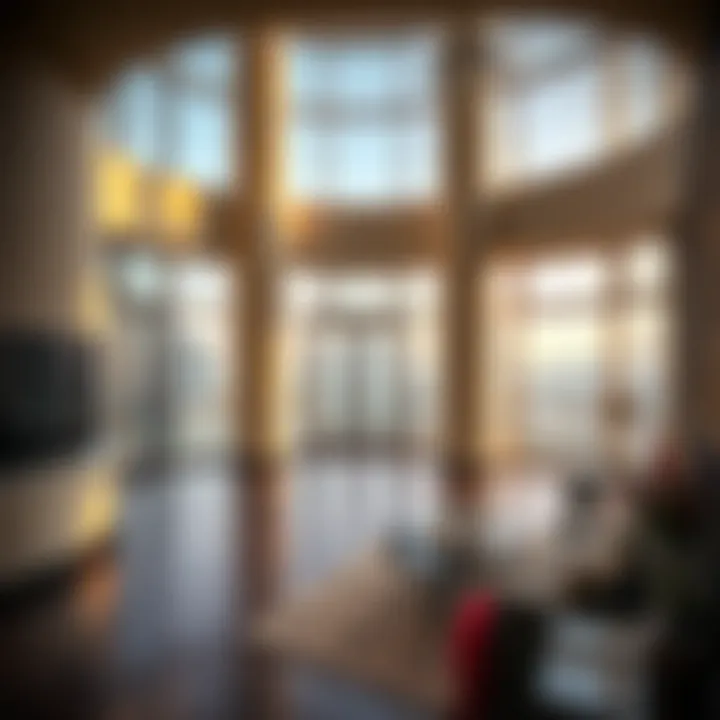
Intro
The International City of Dubai, a uniquely conceptualized urban environment, offers an intricate tapestry of living spaces that embodies the essence of modernity intertwined with cultural diversity. This article attempts to pull back the curtain on the various facets of room — not just as mere physical spaces, but as elements steeped in social context and cultural implications. Understanding the nature of rooms in this vibrant locale aids potential residents, investors, and everyone in between in navigating the complex landscape that is Dubai’s real estate market.
We will dive into the specifics of market trends, investment opportunities, architectural styles, and how these elements contribute to the overall experience of living in this dynamic city. Recognizing the significance of spaces invites a nuanced appreciation that goes beyond walls and roofs; it brings to light the community and lifestyle that mold this unique environment.
Market Analysis
As Dubai’s urban landscape rapidly transforms, the concept of room takes center stage in the real estate narrative. This analysis outlines current market trends, historical performance, and what they mean for future developments.
Current Trends in Dubai Real Estate
The real estate market in Dubai is akin to a rollercoaster; it has its thrilling ups and stomach-churning downs. Recently, we are witnessing a resurgence in demand, fueled by various socio-economic factors. Investors from around the globe are drawn to opportunities here, and many are taking the plunge into the market, confident in the potential for returns.
- Growth in Rental Yields: Many areas are experiencing an uptick in rental yields, making it an attractive option for investors.
- Shift Toward Affordable Housing: With rising costs in prime areas, developers are moving toward affordable housing projects, aiming to meet the needs of a diverse population.
- Sustainability in Architecture: Environmental consciousness is taking root, leading to the development of green buildings which foster a healthier living environment.
Historical Market Performance
Looking back, the real estate market in Dubai has seen significant fluctuations. After the initial boom that brought about rapid urbanization, we faced a downturn during the global recession. However, recovery was swift, marked by soaring prices and an influx of expatriates keen to make the city their home.
- Pre-2008: Property prices skyrocketed as foreign investors flooded the market.
- Post-2008: The downturn caused a steep decline, with many projects stalled and prices dipping considerably.
- 2010 onwards: A phased recovery began, showcasing resilience through strategic developments and regulatory reforms.
"Dubai continues to reinvent itself; the demand for innovative living spaces grows as developers cater to the evolving lifestyle of residents."
Investment Opportunities
Investing in Dubai’s real estate market presents myriad opportunities, especially in Dubai’s International City. The unique blend of cultural significance and architectural allure makes it a targeted option for real estate enthusiasts.
Best Areas for Real Estate Investment
When considering where to invest, several key areas in Dubai’s International City stand out. Think of them as gems hidden in plain sight, each offering distinct advantages:
- China Cluster: A vibrant community promoting cultural diversity, drawing in tenants who appreciate its unique ambiance.
- Russia Cluster: Vast residential options appealing to expatriates, coupled with a range of amenities.
- India Cluster: Popular among families, this area features mixed-use developments catering to various lifestyle needs.
Understanding Property Value Appreciation
Before plunging headfirst into property investment, it is crucial to grasp how property value appreciation works. Here are some factors to consider:
- Location: Proximity to key transport links, schools, and leisure activities boosts property value.
- Community Services: The presence of parks, shopping centers and recreational facilities enhances the desirability of a location.
- Economic Climate: A growing economy will invariably affect property prices positively, so staying informed about Dubai's economic indicators is key.
In essence, a fast-paced, ever-evolving environment like Dubai’s International City invites both challenges and rewards, where meticulous research and awareness of trends can lead to informed decisions and fruitful investments.
Prelude to the International City
The International City in Dubai stands as a testament to the city's continuous evolution and bold vision for the future. This vast development, sprawling across an extensive area, serves not just as a residential hub but also as a unique blend of culture, commerce, and community. Understanding the International City is vital, as it offers insights into the living conditions, societal structure, and investment potential in one of the most dynamic cities in the world.
Background and Development
Dubai's International City was launched during the early 2000s amid a rapid expansion of property developments within the emirate. Envisioned as an affordable yet vibrant living solution for families and professionals from various backgrounds, the project encapsulates themed zones named after different countries and cities around the globe. This unique design choice not only brings certain cultural nuances into the architectural fabric but also fosters a sense of global community.
The development incorporates a mix of residential spaces, including studio apartments as well as larger multi-bedroom units. It aims to cater to both investors and renters seeking quality living standards without exorbitant prices. Over the years, International City has seen substantial growth, transforming from an arid area into a bustling urban landscape characterized by a wide variety of facilities, parks, and leisure options.
It's important to recognize that the careful planning and design of International City are also critical aspects of its success. The variety of room types available aligns perfectly with the diverse needs of its residents, facilitating a sense of belonging within a truly multicultural environment.
Significance in Dubai's Urban Landscape
The International City holds a pivotal role in Dubai's urban landscape for several reasons. First and foremost, it addresses the pressing demand for affordable housing amidst a backdrop of rising property prices throughout the emirate. Its strategic location near major highways facilitates accessibility to key points within Dubai, making it an attractive choice not only for newcomers but also for long-term residents.
Moreover, International City serves as a melting pot where cultural diversity thrives. Residents hail from various countries, enriching the community fabric with their traditions, languages, and festivals. This cultural blending paints a rich tapestry of life in the International City, making it an appealing locale for expatriates and locals alike.
Additionally, the intersection of residential spaces with commercial opportunities within the International City demonstrates its forward-thinking urban planning. By fostering commercial establishments alongside purely residential areas, the development encourages a balanced lifestyle and enhances the quality of living for its residents.
Understanding the Concept of Room
In a vibrant urban tapestry like Dubai, the concept of room transcends mere physical space. It's about how these environments cater to diverse lifestyles and aspirations of residents. Understanding the nuances of different rooms in the International City illuminates not only individual choices but also broader trends in the city's housing market. This comprehension is essential for anyone interested in investing, renting, or even just appreciating the complex dynamics of urban life in Dubai.
Definition and Relevance
In the context of residential architecture, a "room" isn't simply a designated area enclosed by walls. It encapsulates functionality, comfort, and often, the economic implications in a bustling city. The relevance of this concept lies in how it affects daily living experiences and potential investment opportunities. The types of rooms available in the International City showcase diversity, reflecting the needs of its multicultural inhabitants. Whether one seeks solitude in a studio apartment or roominess in a two-bedroom unit, this variety is vital in identifying market potential and understanding demographic shifts within the community.
Types of Rooms in International City
Studio Apartments
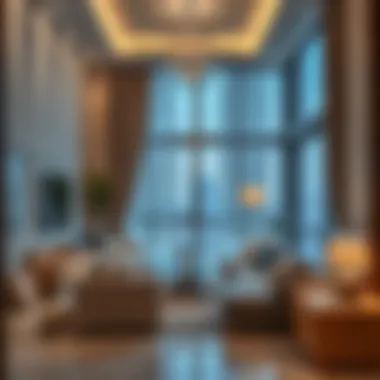
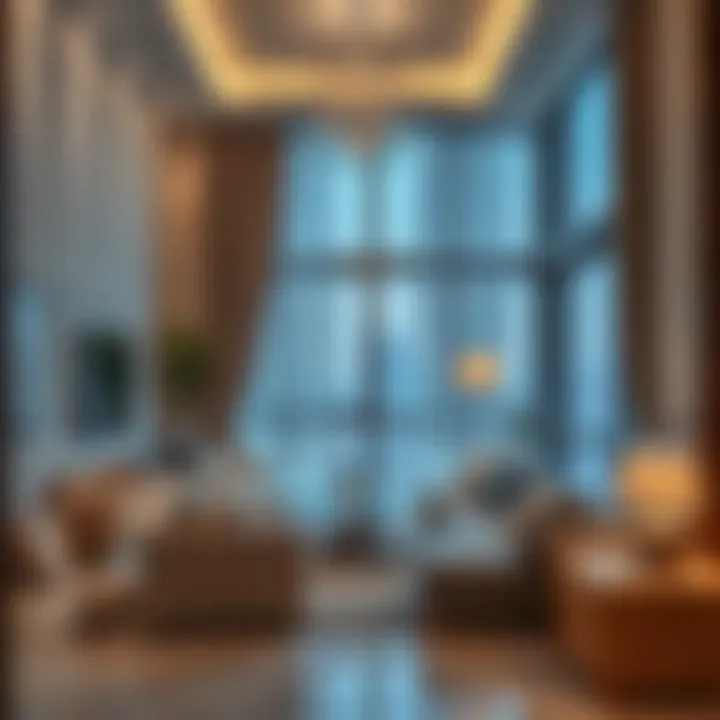
Studio apartments highlight efficiency in living space, catering mainly to singles or young couples. A defining characteristic is their open floor plans, combining living, sleeping, and dining areas into a cohesive unit. This layout has a significant impact on overall costs, making it an appealing choice for budget-conscious individuals looking to live in Dubai without breaking the bank. The compact design doesn't compromise on essential facilities, and many units come equipped with modern amenities. The main advantage lies in affordability and maintaining a minimalist lifestyle, although some might find the lack of separation challenging.
One-Bedroom Units
One-bedroom units present a step up from studios, introducing distinct living and sleeping areas. This subdivision makes them popular among expatriates who may appreciate an extra sense of space or privacy. A key feature of these units typically includes additional storage solutions, making it easier for residents to settle in with their belongings. Moreover, they provide a balance between comfort and affordability—ideal for professionals aiming for work-life balance in the lively atmosphere of Dubai. On the flip side, one-bedroom units may be less economically advantageous for families or larger demographics looking for more spacious living configurations.
Two-Bedroom and Larger Accommodation
Two-bedroom and larger accommodations cater to families or multiple occupants who require more space. These units provide flexibility with room assignments, and they often foster a sense of community, allowing residents to share living costs without infringing on each other's personal space. A significant characteristic of these larger homes is the potential for varied layouts, often accompanied by amenities like two bathrooms or communal areas such as spacious kitchens. The main advantage here is that they can enhance familial bonding, though the trade-off may be higher rental costs and maintenance responsibilities. This option increasingly appeals to both renters and buyers navigating the complexities of city life amidst urban expansion.
"The choices in housing types resonate deeply with the evolving identity of Dubai's International City, where every room tells a unique story of its resident's lifestyle."
Architectural Styles and Design Elements
In an urban setting like Dubai's International City, architectural styles and design elements play a pivotal role in defining not just the look of a neighborhood but also how people interact with their surroundings. The architecture influences not just aesthetics but also the functionality of the spaces where residents live, work, and socialize. From traditional styles reflecting cultural heritage to modern designs that push boundaries, each element contributes to the character and appeal of this unique community.
Overview of Architectural Trends
The architectural landscape of International City is a blend that showcases a myriad of influences, catering to the tastes and needs of its multicultural inhabitants. The trends here reflect a synergy between the global design principles and local cultural motifs.
- Mediterranean Style: Many buildings exhibit tiled roofs, arched doorways, and wrought iron balconies reminiscent of coastal towns in Southern Europe.
- Contemporary Design: Sleek lines, open spaces, and large glass windows are prevalent in newer constructions, creating a sense of spaciousness and light.
- Futuristic Elements: An increasing number of properties are integrating smart home technologies, featuring designs that emphasize sustainability and energy efficiency.
These trends are not just about outer appearances; they play a role in enhancing the quality of life for residents. Well-designed communal areas, for instance, encourage social interactions, fostering a sense of community amongst the diverse population.
Influence of Cultural Diversity
Dubai is often referred to as a melting pot of cultures. International City embodies this concept beautifully through its architectural styles. The variations in design are influenced by the backgrounds of its residents, offering a glimpse into the values and aesthetics from around the globe.
- Global Designs: Each district in International City mirrors different cultural identities, from Chinese-themed architecture to the distinctive touch of Persian styles.
- Community Integration: These styles create spaces where people from various cultures can come together, celebrate their differences, and form a unified identity.
- Symbolic Features: Elements like decorative motifs or traditional design aspects not only serve an aesthetic purpose but also represent cultural narratives, making each room unique.
"Architecture is the art of how to waste space." — Philip Johnson
Cultural diversity doesn’t merely inform design—it enriches it. Familiarity with various styles and aesthetics often leads to innovative approaches in architecture, fostering creativity that goes beyond conventional boundaries. Thus, the architectural richness in International City is a direct reflection of its inhabitants' diverse cultural heritage, making every room not just a physical space, but a story waiting to be told.
By embracing these architectural styles and leveraging the cultural diversity of its community, International City stands as a testament to how thoughtful design can enhance urban living, providing valuable insights for investors, realtors, and prospective residents alike.
Exploring Market Trends
Analyzing the market trends in Dubai's International City is not just a necessary aspect for investors, homebuyers, or renters; it’s an essential part of understanding the entire ecosystem of this vibrant locality. The real estate market here is quite dynamic, reflecting broader economic conditions, cultural influences, and localized demand factors. It is crucial to grapple with the specific elements that shape the property landscape, particularly in a city renowned for its ambitious architectural feats and diverse population.
Current Property Values and Trends
Property prices in International City ebb and flow based on various conditions. Currently, the market exhibits an upward trajectory, yet it’s mainly influenced by external economic factors, coupled with an increase in population. Investors often look towards unit types—whether studios or two-bedroom apartments—as indicators of market health. Local demand for affordable housing increasingly drives prices up, notably among working expatriates looking for cost-effective options in a bustling metropolis like Dubai.
"The essence of smart investing often rests in timing; understanding when to enter a market can make all the difference in your gains."
Factors Influencing Demand
Location Benefits
The strategic positioning of International City offers a significant advantage. Located near major highways and just a stone's throw from Dubai’s core, it serves as a convenient residence for those commuting to various business hubs. This accessibility is a key characteristic, making it a desirable option, especially for young professionals or families seeking affordable living without sacrificing the urban experience. Unique features, such as proximity to the Dubai International Airport, enhance this benefit further, as residents enjoy seamless travel options. One downside could be the crowded nature of the surrounding thoroughfares during peak hours, potentially making daily commutes a bit more tedious.
Economic Developments
Economic stability and development deeply intertwine with the demand in International City. Recent years have witnessed substantial infrastructural investments aimed at boosting both commercial and residential spaces. Such economic developments cultivate a favorable environment for real estate investors and renters alike. The burgeoning job market and rising salaries in Dubai strengthen buying power among residents, making it an attractive locale for long-term investments. However, fluctuations in the global oil market can affect overall economic conditions and, subsequently, the real estate market; something that prospective buyers must keep in mind.
Cultural Attractions
Cultural attractions in and around International City enrich the residence experience for many inhabitants. The unique design of the various sectors reflects different cultural elements, making it a melting pot of traditions and lifestyles. With shopping centers, parks, and community festivals dotting the landscape, these elements significantly contribute to the community's appeal, generating consistent interest among families and individuals alike. However, it's worth noting that while cultural vibrancy attracts residents, competition from neighboring areas may dilute some of this market interest, necessitating a comprehensive understanding of both local and broader cultural dynamics.
In summary, understanding the market trends within the International City involves a meticulous examination of various interrelated factors. Investors and potential residents gain a clearer picture through the lens of location benefits, economic developments, and cultural attractions, all of which equip them to make informed choices in the vibrant Dubai real estate landscape.
Amenities and Community Features
When it comes to living in the International City in Dubai, the significance of amenities and community features cannot be overstated. This area is not just about the walls and ceilings of each room; instead, it embodies a whole lifestyle, enriched by its various facilities and services. Prospective residents, whether buyers or renters, often prioritize the amenities available to get a feel for the quality of life they can expect.
One of the key aspects of amenities in this vibrant community is their diversity and accessibility. International City offers a blend of essential services and recreational opportunities that create a balanced environment for its inhabitants. Everything from shopping and dining to healthcare and educational facilities is within reach, which makes life much more manageable. This accessibility also enhances the living experience, encouraging a sense of community by facilitating social interactions among residents.
Here are some notable benefits regarding amenities and community services in International City:
- Convenience: Having these services nearby means residents can save time. Grocery shops, clinics, and schools are often just a stone's throw away.
- Enhanced Quality of Life: Well-established parks, gyms, and social clubs can significantly increase overall satisfaction and well-being.
- Economic Opportunities: With various retail and service establishments, there are often job openings within the community itself, adding to the area's appeal.
Essential Services Available
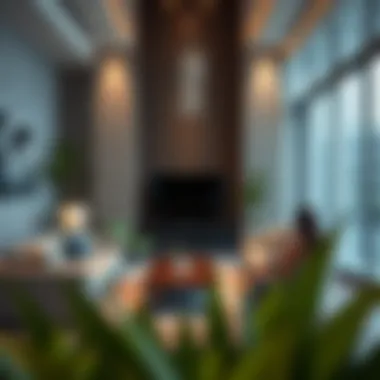
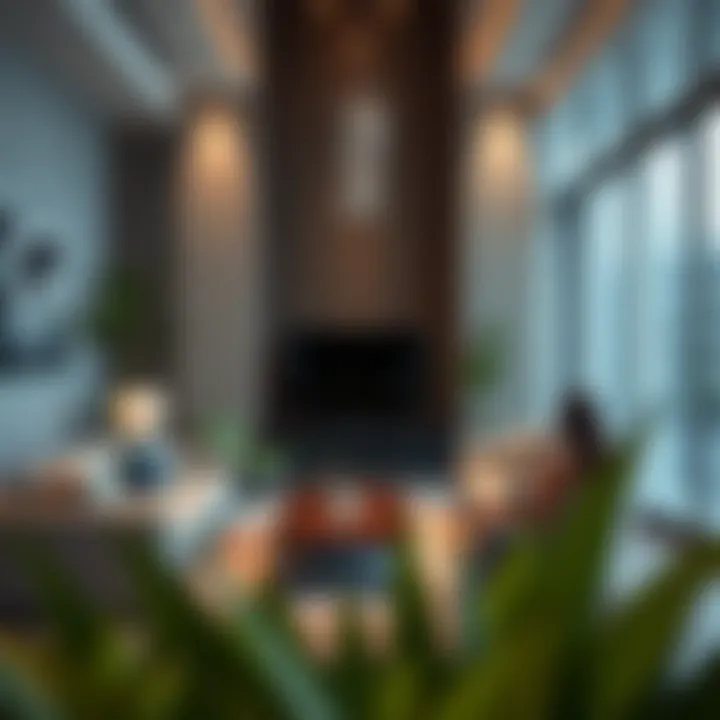
In International City, essential services play a crucial role in daily living. Residents can access various amenities designed to meet their basic needs efficiently. These include:
Health Services
- Clinics and Pharmacies: You will find both privately owned and community health clinics offering medical care. Pharmacies stock everything from prescriptions to over-the-counter medications.
Education Institutions
- Schools and nurseries: Several educational facilities cater to families. These institutions emphasize quality education, catering to different age groups, from preschoolers to secondary students.
Grocery and Retail Stores
- Shopping Centers: The area features multiple retail options, allowing residents to purchase daily necessities without traveling far. Notable chains such as Carrefour provide comprehensive shopping experiences.
The presence of these essential services not only simplifies day-to-day life but also significantly boosts the appeal of living in International City.
Recreational Facilities and Parks
Beyond necessity, recreational facilities and parks in International City contribute immensely to the quality of life, promoting health and well-being.
Parks
- Green Spaces: The area is dotted with parks that offer residents a breath of fresh air amidst the city bustle. Families can enjoy picnics, and children have playgrounds to explore.
- Walking Trails: Paths for jogging and leisurely walks are becoming more popular, allowing residents to incorporate physical activity into their daily routines.
Sports and Fitness
- Gyms and Fitness Centers: Whether you prefer group classes or solitary workouts, options abound. These facilities cater to fitness enthusiasts of all levels.
- Community Pools: Having access to pools encourages outdoor activities, especially during the scorching Dubai summers.
Cultural Implications of Living in International City
The phrase melting pot often describes Dubai, and living in the International City is the epitome of that idea. It’s more than just a collection of buildings or units; it's a vibrant community where cultures converge, creating a unique lifestyle for residents. This section dives into the cultural implications of residing in International City, highlighting aspects that resonate deeply within its multicultural framework.
Community Engagement and Integration
Living in International City encourages a sense of community engagement that is hard to find elsewhere. The rich tapestry of nationalities fosters an environment where neighbors can learn from each other. There are several cultural clubs and focused gatherings, where various groups come together to share their traditions, cuisines, and celebrations. A Pakistani resident might host a barbecue featuring biryani, while an Italian neighbor brings pizza, fostering not just a dinner but an exchange of stories, values, and experiences.
Many residents find a sense of belonging through this engagement. It’s not just about sharing meals; it extends to community events such as sports tournaments, poetry readings, and film nights that highlight each other’s cultural backgrounds. The presence of community centers and shared spaces makes it easier for people to connect and break barriers, ensuring everyone, regardless of nationality, has a seat at the table, quite literally.
- The International City Festival is a prime example, encouraging residents to showcase their cultural heritage, art, and cuisine.
- Regular classes, from Arabic language lessons to cooking workshops, further enhance integration by bridging cultural gaps.
Residents often speak about how living in this environment enriches their lives. The everyday interactions shape a collective identity that values diversity.
Cultural Events and Celebrations
Cultural celebrations are at the heart of life in International City. These events aren’t just annual occurrences; they happen throughout the year and provide residents with an opportunity to participate, learn, and celebrate together.
During major festivities, such as Eid or Diwali, the entire community lights up with decorations and activities. The vibrancy can be felt in the air, as families come together to organize large-scale gatherings. These occasions are characterized by food stalls, music, dance, and art exhibitions that provide a glimpse into various traditions.
"In International City, a festival is not just a celebration; it’s a gathering of worlds. It’s where I meet new friends and taste flavors I never knew existed."
Noteworthy events include
- Chinese New Year celebrations that feature dragon dances and traditional performances.
- Christmas Markets that bring festive cheer, showcasing talents and crafts from various countries.
Such cultural spectacles reinforce a sense of unity among diverse groups. They help residents see beyond their own backgrounds, recognizing the beauty in each other’s cultural narratives.
Ultimately, the cultural implications of living in International City extend beyond mere cohabitation. It presents a life where diversity is celebrated, integration is valued, and community bonds are essential, making the International City not just a place to live but a place to grow together.
Practical Considerations for Residents
Living in Dubai's International City offers a unique blend of cultural richness and urban convenience, but it’s crucial for residents to weigh practical considerations that influence their daily lives. Addressing aspects such as living costs, transportation options, and overall accessibility shapes the experience of living in such a distinctive locale. These factors are not just numbers; they impact lifestyle choices, financial planning, and community dynamics.
Living Costs and Expenditure
Understanding living costs in International City is essential for anyone considering a move to this vibrant area. The expenses can vary significantly based on various elements, including the type of accommodation and lifestyle preferences. Here are some key aspects that come into play:
- Rental Prices: Generally, one can find studios and one-bedroom apartments that fit a range of budgets. As of late, studio prices can begin around AED 30,000 annually, while one-bedroom units can hover around AED 40,000. It's wise to keep an eye on market trends, as prices can fluctuate.
- Utilities: Monthly utility costs, which include electricity, water, and cooling, can add a pinch to the overall budget. Expect about AED 500 to AED 800 per month, depending on usage and season.
- Groceries and Dining: Living costs also extend to everyday necessities. For budget-conscious individuals, local markets in International City offer affordable options. However, frequent dining at upscale eateries could lead to those digits rising. Depending on lifestyle choices, a monthly grocery budget can land between AED 1,000 to AED 1,500.
Living in International City means balancing affordability with quality. It's vital to evaluate all financial aspects carefully, ensuring a comfortable lifestyle.
- Health and Education: If you have families, look into healthcare and schooling costs. Public schools tend to be more affordable compared to private institutions. Health insurance can average around AED 4,000 per year, depending on coverage.
Transportation and Accessibility
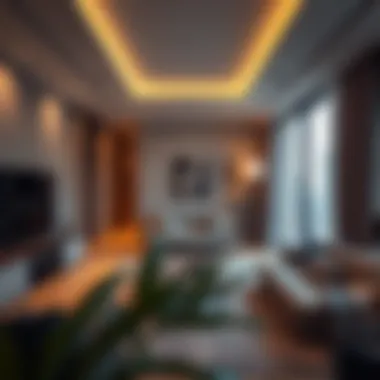
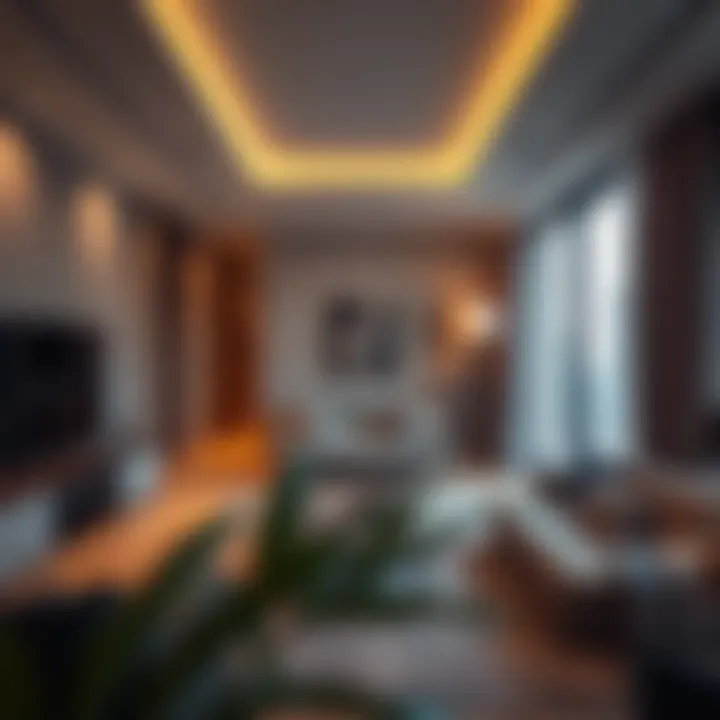
When it comes to transportation, International City is strategically located but does come with its challenges. Here’s what residents should consider:
- Public Transport: The Dubai Metro is a close ally for many residents, providing access to various parts of the city. However, getting to the nearest metro station might require a short bus ride, often taking about 15 to 20 minutes. Public buses also connect International City to central districts, making it fairly convenient for getting around.
- Car Ownership: For those who prefer driving, car ownership may be necessary, particularly for families or professionals who commute regularly. Fuel prices in Dubai are generally reasonable, but potential owners should factor in parking costs and maintenance as well.
- Road Connectivity: Several main roads and highways, such as Sheikh Mohammed Bin Zayed Road, peel off from the International City, facilitating easier access to commercial centers, Dubai Airport, and beyond. However, rush hours can make commuting time a bit of a gamble.
- Cycling and Walking: For the eco-conscious, cycling paths and pedestrian-friendly areas are gradually being developed. Although the environment can seem car-dominated today, future infrastructure improvements aim to strike a better balance, potentially enhancing community livability.
In summary, while the International City stands as a cultural melting pot with affordable living options, prospective residents must meticulously examine costs associated with daily living and consider transportation possibilities. These practical aspects shape not only the financial landscape but also contribute to an enriching experience in this unique urban center.
Property Management in International City
Property management is an essential component of the residential landscape in International City. With diverse options for living spaces, understanding how to effectively manage these properties can greatly enhance the experience for both tenants and landlords alike. This involvement not only keeps the properties in top-notch condition but also ensures that the investment made in these spaces continues to yield returns over time.
Understanding Rental Agreements
Rental agreements form the backbone of property transactions in International City. These documents outline the rights and responsibilities of both landlords and tenants. One key element here is clarity; ambiguities can lead to misunderstandings, resulting in discord. Most agreements state the rental price, terms of payment, and duration of tenancy. These contracts can also include clauses about maintenance responsibilities and rules regarding subletting or having pets.
Points to consider in rental agreements include:
- Duration: Most rentals in this area often feature agreements that can range from monthly to yearly leases.
- Protection Clauses: It's wise for landlords to include sections that protect them from potential damages caused by tenants.
- Exit Condition: The state of the property when the tenant moves out can be critical. Providing a checklist can work wonders.
In a bustling area like International City where new residents frequently come and go, understanding these agreements is crucial for anyone looking to invest in rental properties.
Maintenance Requirements
When it comes to maintaining properties in International City, it’s far more than just fixing broken appliances or repainting walls. Regular upkeep and preventative measures can substantially reduce costs in the long run and ensure a better living experience for tenants. The unique weather conditions of Dubai necessitate specific types of maintenance routines to protect structures.
Essential maintenance steps might include:
- HVAC Systems: Given the hot climate, ensuring air conditioning units are regularly serviced is a priority.
- Exterior Repairs: The exterior should be inspected periodically for sand and dust accumulation that could cause damage.
- Safety Features: Regular checks on smoke detectors and emergency exits cannot be overlooked, ensuring compliance with safety regulations.
Efficient property management involves not just addressing issues as they arise but anticipating them. Regularly scheduled maintenance allows for the detection of minor problems before they snowball into major expenses.
"A stitch in time saves nine" – this old saying rings particularly true in property management.
Ultimately, effective property management in International City is safeguarding investments while prioritizing tenant satisfaction. Investors, realtors, and landlords who embrace a proactive approach will find that the rewards are manifold.
Future Developments and Trends
Understanding the future developments and trends in the International City of Dubai is crucial for investors, realtors, developers, buyers, and renters. This section sheds light on anticipated projects which will shape living spaces and amenities in this vibrant urban environment. The potential impacts on property values and overall community engagement will also be explored, offering a roadmap for future involvement in this unique locale.
Anticipated Construction Projects
The landscape of International City is set for a significant transformation with several anticipated construction projects. The upcoming developments focus on enhancing the residential and commercial experience, promising to deliver a blend of functionality and luxury.
Among the key projects in the pipeline is the Dubai Central Park, designed to be a green oasis in the urban sprawl. The park aims to include recreational areas, walking paths, and family zones, facilitating community engagement.
Another noteworthy initiative is the expansion of retail spaces. New shopping complexes will house various brands and services, aiming to fortify the retail market in the area. This also means more job opportunities for locals, directly contributing to boosting the economy.
In addition, the introduction of new public transport options is expected to improve accessibility, linking International City to nearby areas, such as Dubai Festival City and Dubai Silicon Oasis. Enhanced connectivity will not only make commuting easier for residents but also attract businesses looking for a stable workforce.
Impact on Property Values
As these projects come to fruition, the implications on property values cannot be understated. Increased amenities and improved infrastructure will invariably push property values upward, as demand rises alongside the attraction of a more vibrant community.
Potential homebuyers and investors should keep a close eye on these developments. Historically, regions experiencing similar growth patterns have seen property values increase significantly. Here are a few points to consider:
- Increased Demand: As the population increases and new facilities become available, demand for housing will rise.
- Rental Opportunities: With more inhabitants, rental rates are likely to see an uptick, offering an advantage to property investors.
- Market Trends: Investors should analyze past trends in similar developments to gauge expectations for International City.
The intersection of construction and evolving market dynamics in International City is a critical area of focus for anyone looking to invest or live in the area. An informed approach can yield significant dividends.
Ending
In concluding this exploration of room in Dubai's International City, it becomes clear that the concept extends beyond mere physical space. The importance of understanding room dynamics in this context cannot be overstated, especially for those considering investment or residency in this unique locality. The intricate interplay of cultural diversity, architectural styles, and market trends creates a distinctive living experience that offers a myriad of benefits.
Summary of Key Insights
Firstly, the variety of room types, such as studio apartments and larger family units, caters to a wide range of residents. This flexibility not only attracts a diverse population but also fosters community engagement. It's worth noting that these living spaces are designed with an understanding of practical needs and modern amenities, addressing both functionality and comfort.
Secondly, the architectural elements reflect a blend of influences, creating a visually appealing environment. This aspect enhances the aesthetic quality of the International City, making it a desirable destination for both residents and tourists. The deliberate incorporation of cultural motifs signifies a respect for the myriad backgrounds of the community's inhabitants, promoting an inclusive atmosphere.
Furthermore, market trends reveal that property values are influenced by several factors, including location benefits and ongoing developments in the surrounding area. As the urban landscape continues to evolve, potential investors and residents should keep a keen eye on these fluctuations to make informed decisions.
In addition to these insights, the emphasis on community-centered amenities—such as parks and recreational facilities—underscores a commitment to improving quality of life. This balance of personal space and communal interaction is crucial for those residing in high-density urban environments.
Final Thoughts on Living in International City
Ultimately, living in Dubai's International City presents a unique blend of advantages suited for various lifestyles. Whether one is an investor looking at the potential for property growth or a renter seeking convenience and community, this locality offers a rich tapestry of experiences. The lessons learned from this exploration highlight that one’s living space is not just about walls and windows; it encompasses a deeper narrative regarding culture, community, and livability. As developments continue to unfold, staying abreast of changes within the International City will be essential for navigating future opportunities.
The essence of this city lies not just in its physical structures but in the lives that inhabit them. Anyone thinking of making a move here will find that the warmth of community spirit and the vibrancy of diverse cultures create an enriching living experience that transcends conventional definitions of "room."
"Living in International City is like painting your life with a multitude of colors, where each shade brings a new story to tell."
In summary, Dubai's International City promises not just a place to live, but a way to engage with a vibrant, dynamic community. This consideration is paramount for anyone interested in capitalizing on the unique offerings this area presents.


